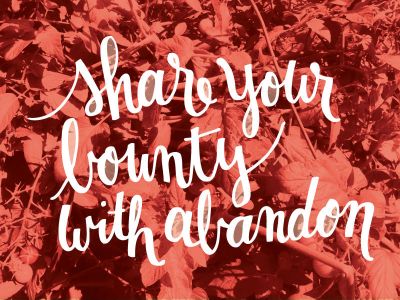From the Heirloom Food Project
I’m no master gardener, but for each of the past four years, our raised beds have contained zucchini. It seems like the ultimate foolproof vegetable – one that can always be counted on to produce and produce and produce.
Zucchini belongs to the cucurbit family along with melon, cucumber and hard-skinned squash like pumpkins. It’s a summer squash, which means it’s harvested before autumn sets in and the rind becomes hard like those of butternut or acorn squash.
Orangey-yellow zucchini blossoms are also edible and incredibly yummy. In my family, they get stuffed with cheese, dredged in egg, fried until golden, and often sandwiched between two slices of bread. I get giddy every time I see them at the market or in my garden. If you’re harvesting them yourself, look for flowers attached to narrow stems (the non-fruiting males) versus flowers attached to stems that look like baby zucchini (the fruiting females).
According to the University of Arizona’s “Master Gardener Journal,” summer squash can be traced all the way back to 5,500 B.C. where they were a staple of Mexican and northern South American diets. After Europe colonized the Americas, summer squash was brought across the Atlantic, where it is believed that the Italians developed zucchini, giving it the name we now use.
Interestingly, even the name implies that the plant is going to be a big producer. It comes from “zucchino,” the diminutive form of “zucca” which means “gourd” or “squash.” “Zucchini” is the plural form, because, there’s never just one “zucchino”!
Each sprawling plant can produce about 3-9 pounds of young fruit. Those numbers made Barbara Kingsolver wonder in “Animal, Vegetable, Miracle:” “Could they design an automobile engine that runs on zucchini?” Imagine the problems it would solve if they could.
With all this history of zucchini’s prolific success, when I sowed my plants a couple of years ago, I was certain I’d be swimming in the stuff come August. But, perhaps due to a 57-day rainless streak, it did not show up to the party.
Instead of being the “sharer,” my usual role, I found myself in the position of the “sharee” – dependent on the generosity of folks who had a good harvest.
This garden karma extends beyond the fence.
There are moments when you’ll have a surplus of something – time, resources, friends, food, privilege – while someone else is having a moment of scarcity. Conversely, there are moments when things are thin for you; allow someone the opportunity to help.
These acts knit together a resilient communal safety net, one that becomes stronger every time we reach across to give or receive. Our success as a culture of people from all kinds of backgrounds and ever-changing circumstances lies in this exchange.
Practice this in your own kitchen: share your bounty with abandon.
Invite people to your house for a zucchini dinner. Just like that scene in “Forrest Gump” where they name all the shrimp preparations, you can have zucchini many ways: spaghetti with no-cook zucchini tomato sauce and hazelnuts, fried zucchini flowers, zucchini pizza, shaved zucchini salad, zucchini bread, and more.
Next time you have more than enough, spread that good around. The world needs what you can offer.



